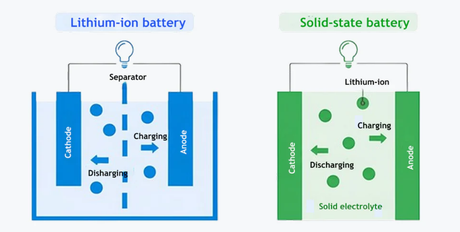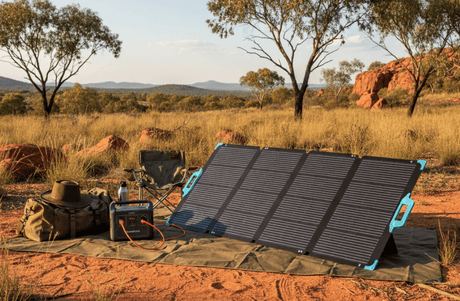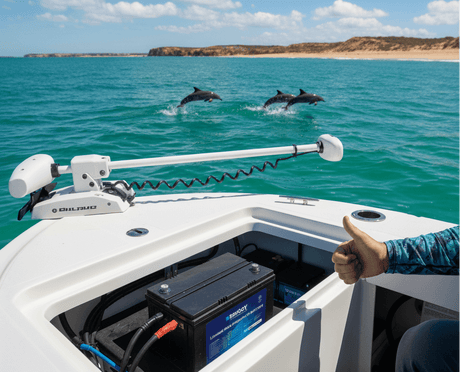Whether you're planning a cross-country expedition or a simple weekend at the lake, an unexpected power failure is the last thing you want to cut your trip short. That's exactly why knowing the signs of dying RV battery is so important. It helps you prevent these frustrating situations before they happen.
A dying battery can leave you stranded, but when you know what warning signs to look for, you take control. You'll be able to spot issues early, handle simple maintenance, and replace parts on your own schedule, not in a panic.
This guide will be your first line of defense. We’ll walk you through the clear signs of dying battery, so you can diagnose problems long before they turn into real emergencies. Ready to become the expert on your RV’s power? Let's begin!
How to Tell if RV Battery Is Bad?
Learning to recognize the early warnings can save you from a ruined trip. Here are the most common symptoms that your battery is on its last legs.
1. The Engine Cranks Slowly or Won't Start
This is the most common sign of dying battery. When you turn the key, instead of a quick, energetic "vroom," you hear a labored, slow "rur-rur-rur" sound or just a series of rapid clicks. This means the RV battery doesn't have enough amps to power the engine's starter motor.
2. Dimming or Flickering Lights
When you turn on lights inside your RV, they appear noticeably dimmer than usual. You might also find that your water pump struggles, your vents run slower, or your stereo resets. This indicates the battery can't provide sufficient voltage under a load.
3. Power Inverter is Screaming
If your RV has an inverter to power AC appliances, it often has a built-in low-voltage alarm. If this alarm is beeping, it's a direct signal that the battery voltage has dropped to a critically low level, which can permanently damage it.
4. The Battery Monitor Shows a Low Voltage Reading
Most modern RVs have a battery monitor panel. A healthy, fully charged battery should read around 12.6 to 12.8 volts when not being charged or powering anything.
- 12.4V: About 75% charged. Okay, but could use a top-up.
- 12.2V: 50% charged. Time to recharge soon to avoid damage.
- 12.0V or below: Severely discharged. This is a critical level that can permanently damage the battery.
5. Swollen Battery Case
Take a look at the battery itself. Extreme temperatures, especially overcharging, can cause the battery case to swell, bulge, or crack. This is a serious sign of internal damage and a safety hazard—the battery needs immediate replacement.

6. Rotten Egg (Sulfurous) Smell
A strong smell of rotten eggs around the battery is a telltale sign of a leak. This smell comes from sulfuric acid, which can leak from a cracked case or be released as gas due to overcharging. This indicates a failing and potentially dangerous battery.
7. Electronics Won't Hold a Charge
This is the ultimate symptom behind the question, "Why does my RV battery keep dying?" Your battery seems to charge up just fine when plugged into shore power or while driving, but the power drains unusually fast when you're off-grid. If your lights and fridge die after only a few hours when they used to last a day or two, the battery has lost its capacity to store energy.
How to Fix a Dead RV Battery?
Let's get practical. Here’s how to diagnose and address the problem.
Phase 1: Diagnosis - Is It Salvageable?
Your first goal is to determine the battery's state of charge and health. To do this accurately, you need one essential tool. That's a digital multimeter. You can buy one for less than $30, and it's the most valuable tool for RV power troubleshooting. It takes the guesswork out of diagnosis by showing you the exact voltage level of your battery.

How to Test Your RV Battery with a Multimeter
- Safety First: Put on safety glasses and gloves. Ensure the area is well-ventilated.
- Set the Multimeter: Turn the dial to the DC Voltage (V-) setting, specifically the 20V range.
- Connect the Probes: Touch the red probe to the battery’s positive (+) terminal and the black probe to the negative (-) terminal.
- Read the Voltage: Check the reading on the digital display and compare it to this chart:
| Voltage Reading | State of Charge | What It Means |
|---|---|---|
| 12.6V+ (12.7V for AGM) | Fully Charged | The battery is full. If it dies quickly when you use things, the battery itself is likely bad. |
| 12.4V - 12.5V | ~75% Charged | This is a healthy, normal range for a battery in use. |
| 12.0V - 12.2V | ~50% Charged | Recharge now. Regularly letting it get this low shortens its life. |
| Below 11.8V | Deeply Discharged | The battery is in danger. Recharge it immediately, but it may have permanent damage. |
| Below 10.5V | Critically Dead | Most smart chargers won't recognize it. It is very difficult to revive. |
Phase 2: How to Recharge a Dead Battery?
Method 1: Using a Smart RV Battery Charger (The Safest Way)
- Disconnect the battery from the RV. Unhook the negative (black) cable first, then the positive (red) cable from the battery terminals.
- Connect to a smart charger. Attach the charger's clamps to the correct terminals.
- Use "recondition" or "supply" mode if available. These modes can give the battery a brief "jolt" to wake it up before starting a regular charging cycle.
- Allow it to charge fully. It may take 6 to 24 hours.
Method 2: Jump Start (Quick Fix)
- Use jumper cables to connect to another vehicle while both engines are turned off. Positive (+) to positive; negative (-) to a clean, unpainted metal ground on the RV's chassis.
- Start the vehicle, then try starting RV
- Drive or plug in RV afterward to fully recharge
Method 3: Trickle Charger
- Use old-style battery charger on lowest setting
- Monitor carefully to prevent overcharging
- Switch to smart charger if voltage recovers
Phase 3: After Revival - The Load Test
Once the battery is fully charged, check to see if it is still good.
- After charging, let battery sit for a few hours
- Check the voltage again. If it has decreased drastically without any load, it has a dead cell and will not hold a charge. It must be replaced.
- Run the test with both the lights and the water pump turned on. If the voltage drops quickly and the lights dim significantly, the battery has lost capacity and must be replaced.
When to Give Up and Replace the Battery?
Replace your battery if it has the following conditions:
- Voltage drops quickly when using appliances
- It won't hold a charge after a proper recharge
- It's physically damaged such as swelling and leaking
- It's more than 3-5 years old and consistently causing problems
The Renogy batteries is an ideal upgrade for your RV, combining critical protection with user-friendly design. Its built-in low-temperature protection safeguards the battery in cold weather, while its compact design and light weight—at only 25kg, it's significantly lighter than a standard battery—make it easy to install and perfect for saving space, ensuring reliable power without the bulk.

Conclusion
By learning the signs of dying battery, and knowing how to test it with a multimeter, you can catch problems before they ruin your trip. So take this guide, trust your diagnostics, and swap that dying battery for reliable power. Your next off-grid journey is waiting. Now, go enjoy the freedom you've earned.






![What Is a DC to DC Battery Charger [Comprehensive Guide]](http://au.renogy.com/cdn/shop/articles/IMG_3829_bd86de74-31d6-49fd-b9d5-265bb723091d.jpg?v=1757582605&width=460)



